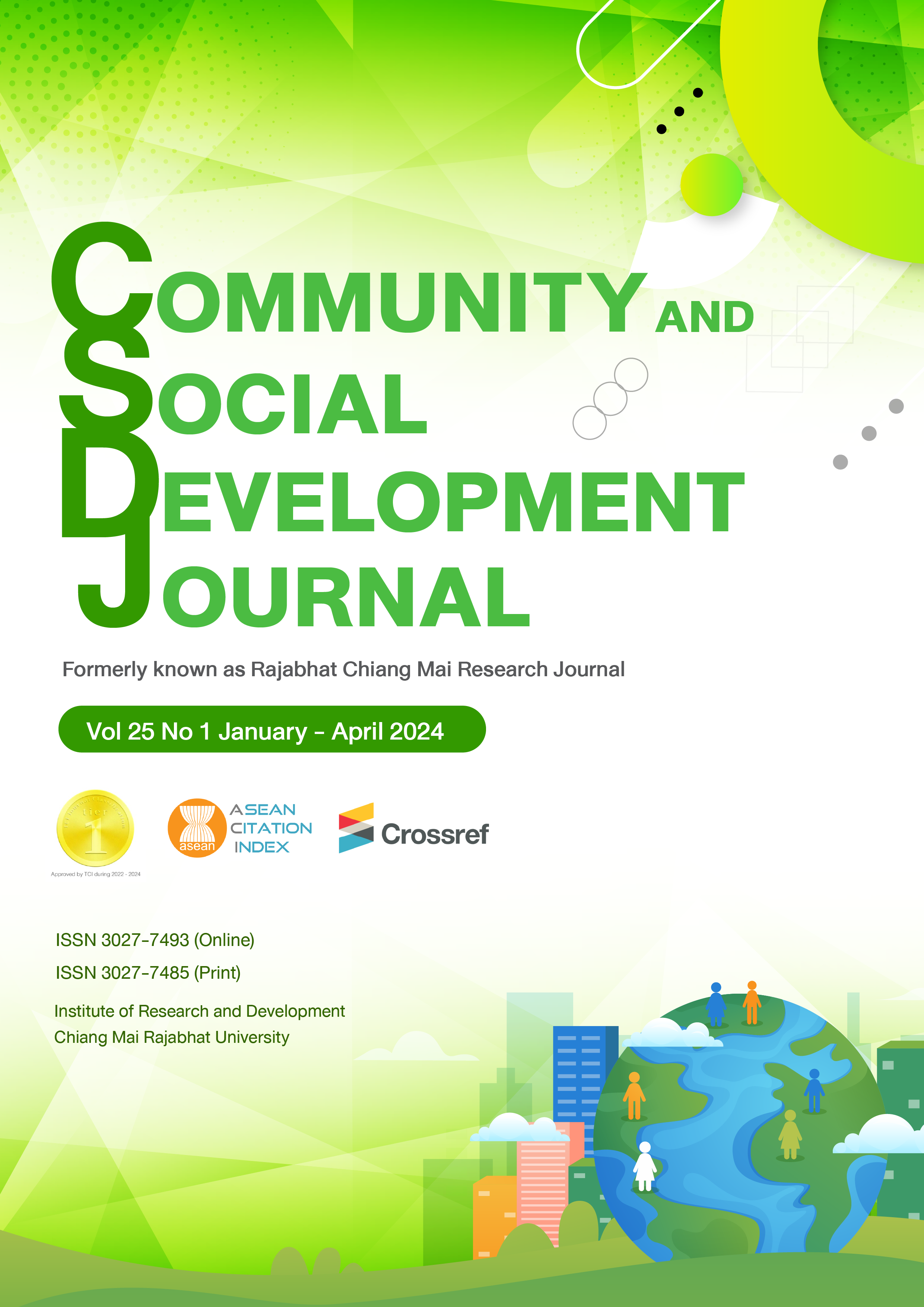Design of Vetiver Handicraft Products, According to the King's Philosophy, towards Sustainable Development, Case Study: Vetiver Handicraft Products, Ban Pong Samit, Mae Wang District, Chiang Mai Province
DOI:
https://doi.org/10.57260/rcmrj.2024.260106Keywords:
Vetiver handicraft productsAbstract
This research aimed to 1) study vetiver products in the recent market 2) design and develop vetiver products 3) evaluate opinions on the new designed vetiver products. The representative sample was 100 people from Ban Pong Samit community group. The research persuaded members in the community group to 1. express their opinions for new designed vetiver products 2. join the wickerwork’s knowledge development training. 3. be in the process of promoting vetiver cultivation and own vetiver products creation project.
In the beginning, the research found that the community has never used vetivers for weaving or creating products, but had used bamboo stripes for basketry work. Therefore, they were introduced to the training process on how to use vetiver as wicker material. Among the process, the lecturer saw the demands for many kinds of product such as key chains, baskets, doormats, and tissue boxes which were easy to get start. Moreover, according to the community's context, Ban Pong Samit is an agricultural community where cultivates flowers, rice, and strawberries so they chose strawberry as identity of their community’s vetiver products. After designing and development, the result shown satisfaction opinions levels as follow: in terms of design, the satisfaction score was 4.51 (a very good level), in terms of the suitability for the area, the satisfaction score was 4.61 (a very good level), and in term of using local material and able to support weight by still conveying the local wisdom, the satisfaction score was 4.56, also in a very good level.
Downloads
References
Boonsoong, A. (2017). The Development of Woven Bamboo Products from NaNokKok District, LapLae District, Uttaradit Province. Faculty of Industrial Technology Journal: Thepsatri I-TECH, 12(2), 169-178. Retrieved from http://industrial.uru.ac.th/research/public/storage/documents/BSimcVWxu3.pdf
Bonollo, E., & Lewis, W. P. (1996). The Industrial Design Profession and Models of the Design Process. Design & Education, 6(2), 1-14. Retrieved from https://www.researchgate.net/publication/302349258_The_Industrial_Design_Profession_and_Models_of_the_Design_Process
Jantrasa, R., Supasetsiri, P., Tangcharoen, W., & Udomsilp P.(2015). The Analysis of Vetiver Fiber for Handicraft Development (Case Study Vetivers Handicraft Products Phayao. Institute of Culture and Arts Journal. Srinakarinwirot University, 17(1), 120-129. Retrieved from https://so02.tci-thaijo.org/index.php/jica/article/view/80485/64122
Jantrasa, R., Supasetsiri (2011). Vetiver Grass, the Handicraft under Philosophy of Sufficiency Economy. Bangkok: DI-VIT Limited Partnership.
Kittipattanawit, J., (2021). The Study of Rice Grain Weaving Pattern for Vetiver Products in Mae Rim District and Sarong Pattern Design in San Kampang District to Applied for Vetiver Bag Product Development, According to the Sufficiency Economy Philosophy. Art and Architechture Journal Naresuan University, 12(2), 126-138. Retrieved from https://so01.tci-thaijo.org/index.php/ajnu/article/view/148551
Kittipattanawit, J., Chainun, C., Saksangn, N., & Rinsangpin, M. (2021). Development of Packaging Forming Machine from antimony leaf for Environment (Case Study: Mae Hong Son Province). Rajabhat Chiang Mai Research Journal, 22(3), 240-252. DOI:10.14456/rcmrj.2021.241675
Land Development Department. (1998). Understanding of Vetiver Grass. Bangkok: Ministry of Agriculture and Cooperatives.
Leesuwan.V., (1989). Thai arts and crafts. Bangkok: Tourism Authority of Thailand.
Pantung. P., (2015). The Creative Process to Increase the Value of the Products and our Community of vetiver OTOP Ban Pakthok, Muang Phitsanulok. VRUResearch and Development Journal: Valaya Alongkorn Rajabhat University under the Royal Patronage. 10(3): 105. Retrieved from https://so06.tci-thaijo.org/index.php/vrurdistjournal/article/view/45096
Sudsang, N., (2004). Industrial Design. Bangkok: Odeonstore.
Suksod,T. (2001). Industrial Products Design. Bangkok: O.S Printing House.
Downloads
Published
How to Cite
Issue
Section
License
Copyright (c) 2024 Community and Social Development Journal : CSDJ Formerly khows as Rajabhat Chiang Mai Research Journal

This work is licensed under a Creative Commons Attribution-NonCommercial-NoDerivatives 4.0 International License.
1. Articles, information, content, images, etc published in the “Community and Social Development Journal” are copyrighted by the Community and Social Development Journal, Chiang Mai Rajabhat University. In order to properly distribute the articles through print and electronic media, the authors still hold the copyright for the published articles under the Creative Commons Attribution (CC BY) license, which allows the re-distribution of the articles in other sources. References must be made to the articles in the journal. The authors are responsible for requesting permission to reproduce copyrighted content from other sources.
2. The content of the articles appearing in the journal is the direct responsibility of the article authors. The editorial board of the journal does not necessarily agree with or share any responsibility.














